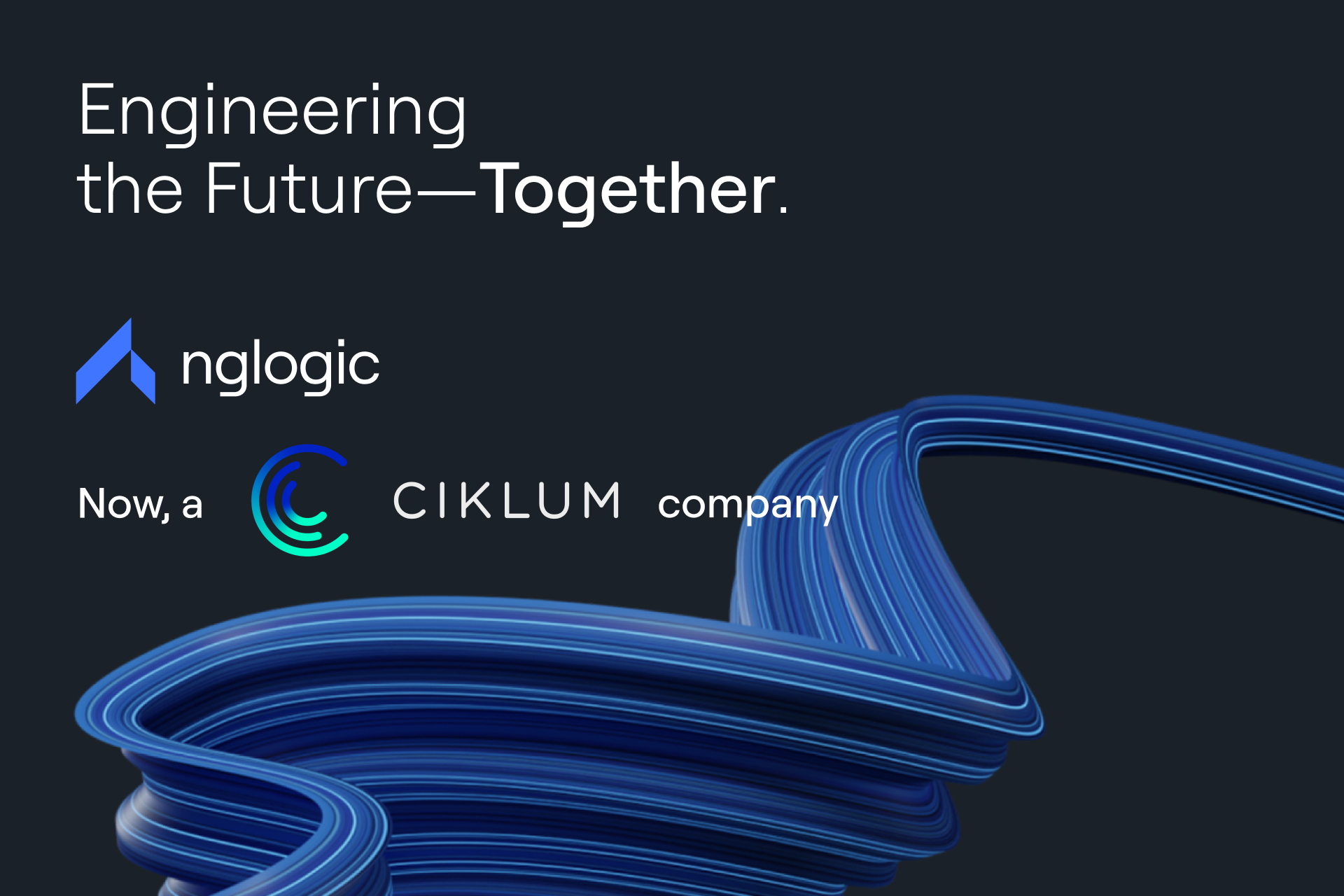Angular is a popular framework backed by a huge community, favored by many developers, and used by leading corporations, including Google, Microsoft, and Samsung. Find out how it can streamline mobile app development.
In software development, efficiency is paramount. Building maintainable and scalable applications requires a lot of proficiency and experience, which enable you to leverage the right development tools to optimize the cost-benefit ratio without compromising quality.
That’s exactly the role of frameworks. They are convenient toolboxes comprising reusable libraries, preset tools, SDKs, ready-to-use components, etc. Frameworks provide engineers with a structured, time-tested approach to streamline the software development process, ultimately contributing to superior user experience and cost reduction.
Angular framework: for web, mobile, or both?
The market offers a great deal of solutions for various types of software projects. One of the top choices for modern web application development is Angular – a comprehensive and open-source front-end framework for creating dynamic and responsive web applications.
Valued for its versatility and robustness, Angular is a solid fit for a wide range of projects, including single-page applications (SPA), progressive web applications (PWA), complex enterprise web apps, and more. A lesser-known fact is that the framework’s capacity extends beyond building pure web apps to the realm of mobile app development.
Leveraging technologies like NativeScript and Ionic, Angular allows developers to craft top-quality mobile experiences, saving you the cost of onboarding additional developers with expertise in other purely mobile-oriented frameworks.
With supporting solutions, Angular applications can be transpiled into truly native code, harnessing the full power of a device’s capabilities and delivering a consistent look and feel across various platforms.
Let’s dig into the key strengths of Angular for mobile development, but first, let’s take a short dive into its history to avoid confusion with another popular framework.
The evolution of Angular: from AngularJS to Angular
Angular is frequently mixed up with AngularJS due to the name similarity. In reality, both frameworks are fundamentally different in architecture and capabilities. Plus, AngularJS was discontinued in January 2022 and is no longer supported. Nevertheless, both technologies have more in common than the name.
AngularJS, also known simply as Angular 1, made its debut in 2010 under the stewardship of Google. It was a groundbreaking JavaScript framework designed to simplify web app development. AngularJS pioneered two-way data binding, enabling sharing data between a component class and its template.
It also prioritized declarative programming – over the imperative approach recommended for business logic – in building user interfaces and joining software components. Overall, it helped enhance user experience while heavily reducing the amount of boilerplate code developers had to write, saving time and costs.
The framework quickly gained popularity and became a cornerstone for building dynamic web applications. However, in the tech industry, things change fast. Soon, AngularJS started to show limitations related to building large-scale applications. Performance was also far from stellar.
A few years into its evolution, the framework struggled to keep pace with modern web requirements. As hurdles piled up, Google’s Angular team had no other option but to rethink their approach. In 2016, the company released Angular 2.
The new iteration was not an incremental update but a complete rewrite of the framework. It successfully addressed the shortcomings of AngularJS and provided developers with a more robust and flexible toolset for building exceptional user interfaces.
One of the key differences between Angular and AngularJS is the language used. While AngularJS relied on JavaScript, Angular adopted TypeScript, a statically typed superset of JavaScript. TypeScript brought strong typing, enhanced tooling, and improved code maintainability to the table, making Angular applications more robust.
Another vital update is the change from two-way data binding to one-way data flow. Angular introduced a unidirectional data flow model, making it easier to manage the state of applications and reducing unexpected side effects. This change helped developers build more predictable and maintainable code.
Angular 2 and its later versions (an interesting tidbit is that the number 3 was left out due to a router’s package versioning misalignment) were structured as a collection of reusable components, emphasizing code reusability.
Since its “refurbishment,” the framework has been heavily focused on performance optimization, aided by features like Ahead-of-Time (AOT) compilation or change detection mechanisms. These and other refinements helped to deal with the predecessor’s major drawbacks, making Angular web and mobile applications faster and more efficient.
Angular mobile app development models: cross-platform and hybrid
Angular is primarily considered a web technology, but in fact, it’s a cross-platform powerhouse, perfectly fit for developing mobile applications. Obviously, decisions about tech stack are not easy. A lot depends on the project’s requirements and the skills of your developers.
Let’s make things clear from the start: you can’t use Angular to create native mobile apps for iOS and Android. If the native approach is your priority, you need to go for native technologies, i.e., Swift/Objective-C for iOS and Java/Kotlin for Android. Still, Angular can help you deliver high-performance mobile apps with great UIs if you couple it with complementary technologies.
Google’s framework is an excellent choice if you’re fine with a non-native approach and want to develop hybrid apps or cross-platform apps. For the latter option, Angular is often used in combination with NativeScript, which acts as a bridge between Angular codebase and the native APIs of iOS and Android.
Instead of using a webview like hybrid applications, NativeScript translates Angular components and code into native UI components and functionality. This means that your app runs directly on the device, providing a native-like user experience.
Ionic, on the other hand, takes a hybrid approach by using web technologies (HTML, CSS, JavaScript programming language) to create mobile apps that run inside a webview. While it provides a consistent and responsive UI, Ionic apps are not truly native since they rely on web technology wrapped in a native container.
Still, Ionic apps offer a consistent user interface and are known for their quick development cycle and broad code reuse.
Key features and advantages of Angular for mobile development
With its ability to target multiple platforms simultaneously, Angular is one of the best toolsets for secure mobile app development. Well-crafted Angular-based software doesn’t fall far behind native apps in terms of performance or user experience while offering cost efficiency and a much shorter time to market.
Let’s look at the key features and strengths of Google’s open-source framework.
Code reusability
Angular’s component-based architecture promotes reusing code. Developers can create reusable UI components, services, and logic, minimizing redundant code, speeding up development, and streamlining maintenance and updates. Again: lower costs, faster results.
Convenient CLI
Angular CLI simplifies project setup, scaffolding, and maintenance, ensuring a smooth development process. It comes with various optimization techniques, such as ahead-of-time (AOT) compilation, that minimize bundle size and enhance app performance.
TypeScript
Angular’s use of TypeScript enhances code quality and maintainability by identifying errors at compile time instead of runtime. Such an approach effectively reduces the likelihood of bugs making it to the production phase.
TypeScript also ensures consistency in data structures and interfaces across the app, contributing to maximized performance.
Native app-like experience
With technologies like NativeScript and Ionic, Angular mobile apps can be transpiled into native code, leveraging the capabilities of a mobile device for a seamless user experience.
Both Angular frameworks provide the means to create efficient and visually appealing near-native apps, all while benefiting from the productivity and code reusability of the Angular ecosystem.
State management
Angular provides robust solutions for state management, i.e., handling application inputs across multiple related data flows. They include built-in support for reactive programming through RxJS and NgRx for more complex state management scenarios.
State management tools facilitate controlling the application’s state and managing numerous interactions, contributing to the responsiveness, maintainability, and scalability of Angular mobile apps.
Progressive Web App (PWA) support
Angular offers strong support for progressive web application development with features like service workers and the @angular/pwa package, simplifying PWA implementation.
Angular service workers (JavaScript middleware acting as a proxy server between an app, a browser, and the network) provide offline support, background synchronization, and efficient caching of assets and data.
Additionally, Angular’s responsive design capabilities make it easier to create PWAs that adapt seamlessly to a user’s mobile screen size.
Native mobile apps or mobile development with Angular: which will work better for your project?
Angular is undoubtedly one of the top JavaScript frameworks. Its main competitors in the mobile app development compartment include React Native and Flutter, both with their own advantages and limitations.
It’s not easy to choose which technology will work best for your project. Building mobile apps is challenging in many ways, and it requires both tech savviness and in-depth business needs assessment.
If your goal is immaculate quality, consider developing a native mobile app. If you prioritize an accelerated development process and business efficiency, you should consider Angular with its extensive libraries, active community, enhanced scalability, and many advanced features.
With a team of experienced developers able to combine Angular with the right technologies to leverage the framework’s robust features, you can deliver a top-notch Angular mobile app at reduced cost and time.
If you care to find out more, reach out for a consultation!













 +1 (888)
413 3806
+1 (888)
413 3806